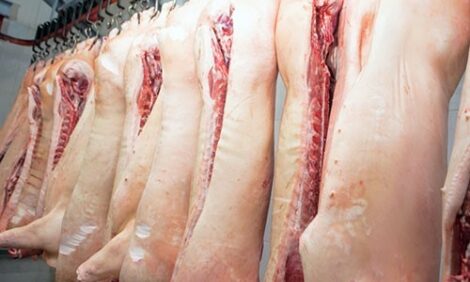



Corn Stocks Report Throws Another Curve Ball
US - In this week's "Market Preview" featured in National Hog Farmer magazine, Steve Meyer discusses the latest WASDE and "Grain Stocks" report released by the US Department of Agriculture (USDA).Sometimes, it is best to not ask "why" a situation looks a bit screwy, but rather to simply take advantage of it and move on. Such may be the case with the USDA’s World Agricultural Supply & Demand Estimates (WASDE) and Grain Stocks reports released last week.
Figure 1 shows the latest domestic production, supply and demand data for corn from USDA. The numbers were somewhat bearish in that they indeed suggest higher output and, thus, larger supplies for the current crop year. The new yield estimate of 147.2/acre is 0.5 bushels larger than the December estimate and a whole bushel higher than the average of analysts’ pre-report expectations. However, in the big picture, the impact on the estimated crop is pretty marginal as the additional 48 million bushels is completely removed by a 50-million bushel increase in projected exports. The net impact is a reduction in year-end projected stocks of only 2 million bushels, leaving the projected year-end stocks-to-use ratio at 6.7 per cent. None of those are enough to change markets much, even though USDA did shave 20 cents/bushel off of both ends of its forecast range for the average US farm price.

The surprise, and thus the primary source of Thursday and Friday’s price declines, was USDA’s estimate that 9.641 billion bushels of corn remained in storage in the United States on 1 December. As Figure 2 shows, that was 250 million bushels (2.7 per cent) higher than the average of analysts’ pre-report estimates and nearly beyond the top of the analysts’ range (9.7 billion bushels). That extra corn is available to the market, thus easing availability concerns and causing prices to fall.

The problem is that the USDA stocks numbers don’t make a lot of sense. And that’s not a new problem since the Grain Stocks reports have been throwing curve balls for the past two years. Those 1 December stocks imply that feed/residual usage for corn was over 10 per cent smaller for the September-November quarter than it was one year ago in spite of the fact that hog numbers were 1.3 per cent higher than last year on 1 December and the number of cattle on feed on 1 December was 4 per cent higher than last year. Yes, chicken numbers were down, but how many chickens can you feed with the corn that normally goes to a steer? The answer – a lot! It is also true that ethanol production and, thus, distiller’s dried grains with solubles (DDGS) production were higher and that wheat was favorably priced in some areas relative to corn. But 10 per cent lower feed usage still strikes me as very low relative to animal numbers.
In addition, USDA did not lower its estimate of feed/residual use for the year. It still stands at 4.6 billion bushels, 4 per cent lower than last year. If the first quarter is down 10 per cent, wouldn’t that reduce usage for the year? If not, just what is going to eat enough over the next three quarters for the number to catch up, even to down 4 per cent?
Any shortfall of corn feeding cannot be made up with DDGS this crop year since USDA is predicting less corn (5.0 vs. 5.2 billion bushels) will be used for ethanol production this year. One caveat is that domestic DDGS availability could rise if exports are reduced and lower corn prices and a stronger US dollar will make that happen to some degree. But I doubt it will be anywhere near enough to fill the whole implied by a 10 per cent reduction in the first quarter of the crop.
Maybe the best explanation was winter wheat seedings of 41.947 million acres, which exceeded the average pre-report estimate by over 1 million acres. That is a big, relatively unexpected increase especially given the weather conditions that the southern hard red winter wheat belt has suffered the past year. That is where the increase occurred, with Texas at +600,000 acres, Oklahoma at +400,000 and Kansas at +700,000 compared to last year. These increases support our recent admonishment that hog producers need to keep an eye on wheat prices and what they might imply for economical hog diets – if not for producers in the Corn Belt, then for producers nearer the major wheat-producing areas.
The good news from all of this is, of course, lower projected costs for the coming year. Figure 3 shows the costs and hog prices projected by closing lean hogs, corn and soybean meal futures prices last Friday. That $12.62/head profit figure is sharply higher than just one week earlier and is due, primarily, to a decline in projected costs. My average for 2012 is now "just" $82.14/cwt., carcass, over $4 lower than the average for 2011.

Will you be able to do better? Perhaps, if everything goes well with winter wheat development and corn planting season. Old crop corn, though, is back near the bottom of both its historic trading range and the $6 to $7 range that I have expected.










